
Jason Bedrick and I co-authored a new study for the Heritage Foundation last week in which we test an assertion made by Texas choice opponents: choice will destroy rural education. Opponents bandy this assertion as if it were a self-evident fact, but can the assertion withstand scrutiny?
Sadly, we noted that Texas public schools seemed to be doing a rather remarkable job of damaging student learning in the absence of choice. The National Assessment of Educational Progress contains data on rural achievement starting in 2007. It’s not pretty in rural Texas:
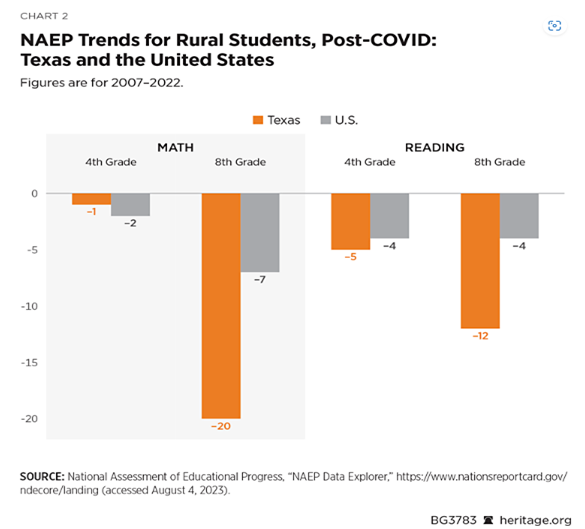
On these exams 10 points roughly equals a grade level worth of progress. Unfortunately, this means that Texas eighth graders demonstrated a command of mathematics in 2022 roughly equivalent to what we would have expected out of a group of Texas sixth graders in 2005. COVID-19 does not account for all of this decline. Between 2007 and 2019, eighth grade students saw approximately a grade level decline in math achievement, and the state suffered another grade level drop between 2019 and 2022.
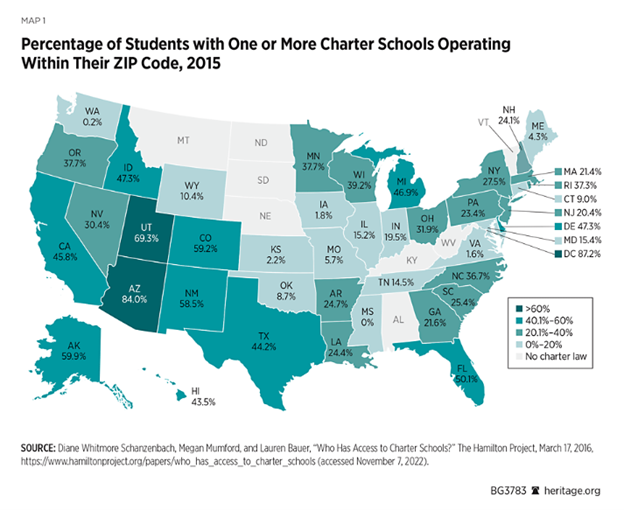
To make the case for choice in rural communities more concrete and less theoretical, we compared academic trends in rural Texas with academic trends in rural Arizona. Arizona has the nation’s largest and most geographically inclusive charter sector (see map above), a very active system of district open enrollment in which nearly all districts participate, tax credit scholarships, ESAs, state funded microschools, homeschooling, and digital learning options.
All of these options reach into rural Arizona communities. Has Arizona rural education suffered “destruction?” No. All Arizona school districts that were educating students in 1993 (the year before the advent of choice) are still educating students in 2023. Moreover, unlike Texas, the academic trends for rural Arizona students have been positive:
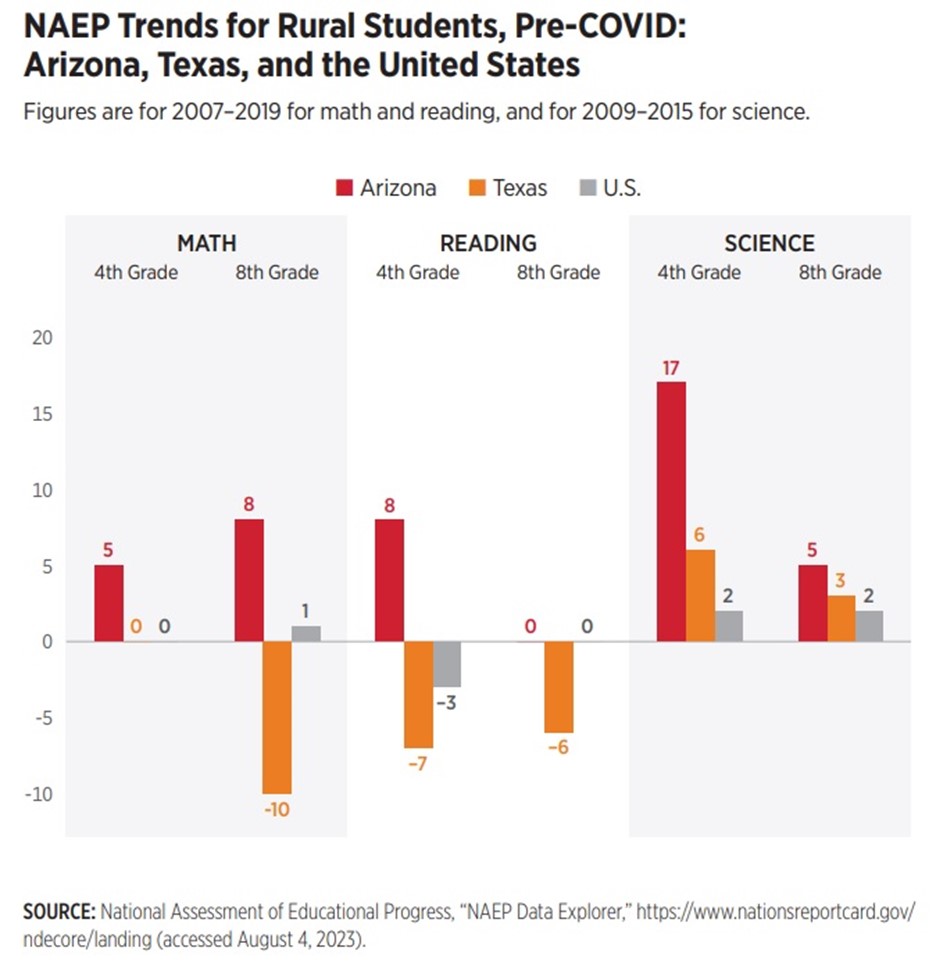
Arizona rural school districts didn’t get the apocalyptic destruction memo. They not only still exist, but their outcomes also improved over time. The Stanford Educational Opportunity project provides a separate source of data showing a similar trend. Stanford scholars linked state testing data in grades 3-8 to enable comparisons across jurisdictions for the 2008-2018 period. Academic growth represents the best measure of school quality, and the project provides growth data for rural school districts (while averaging in charter scores with those of the district in which they reside).
This is my “friendly neighborhood school choice mad scientist makes an excel chart” presentation of that data for rural districts in Arizona and Texas:
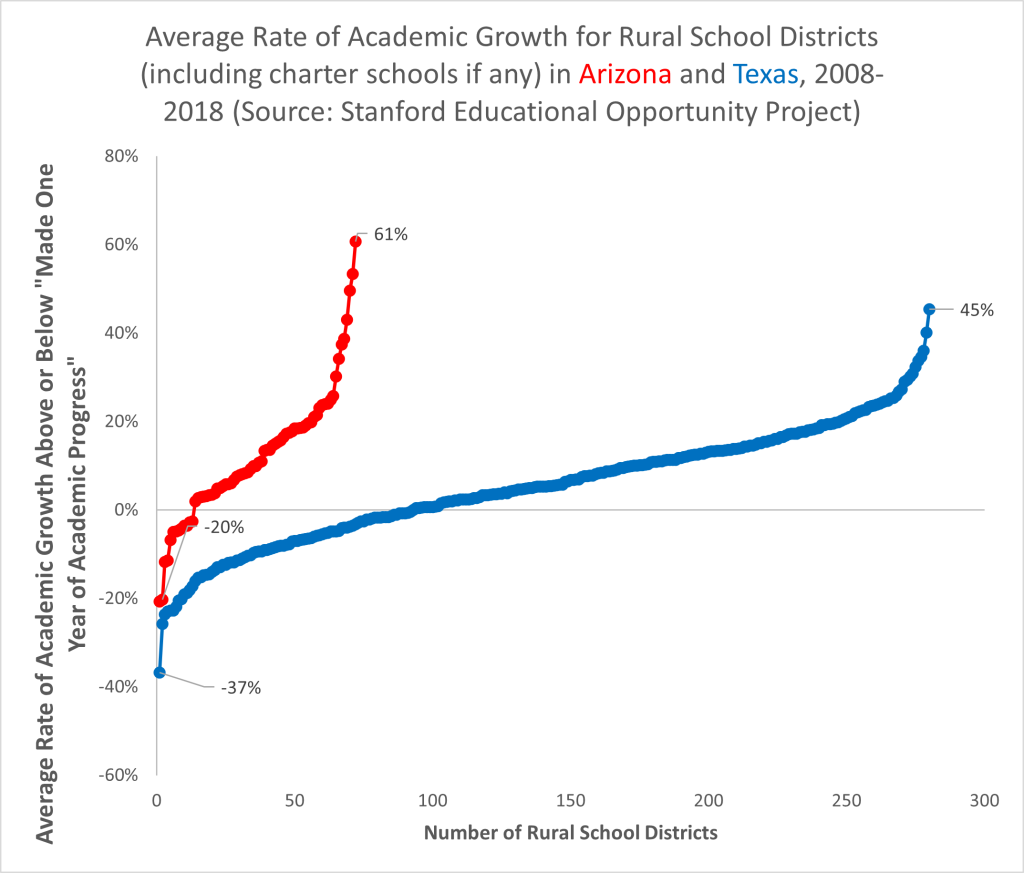
And this is the much-improved version of the same data from the data-wizards at Heritage:
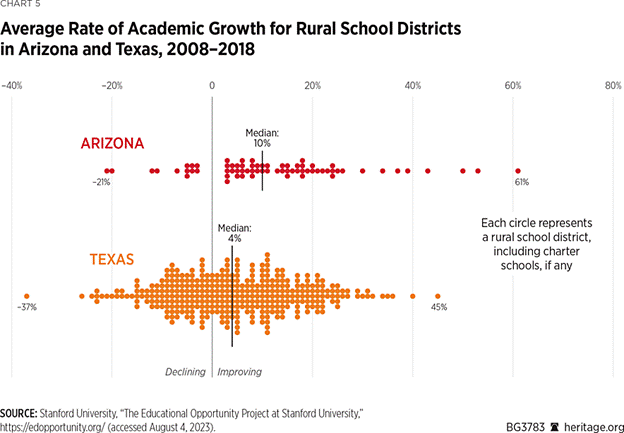
The choice-induced death of rural education appears to have been greatly exaggerated. Choice will be rapidly growing in rural areas of many states in the aftermath of the 2023 legislative sessions. Texas families and teachers deserve these freedoms as well. Arizona lawmakers have empowered teachers to create their own schools and families to sort between schools to find the best fits. Rural teachers and students benefit from variety just like everyone else. Rural Texans have nothing to lose and much to gain from choice.


